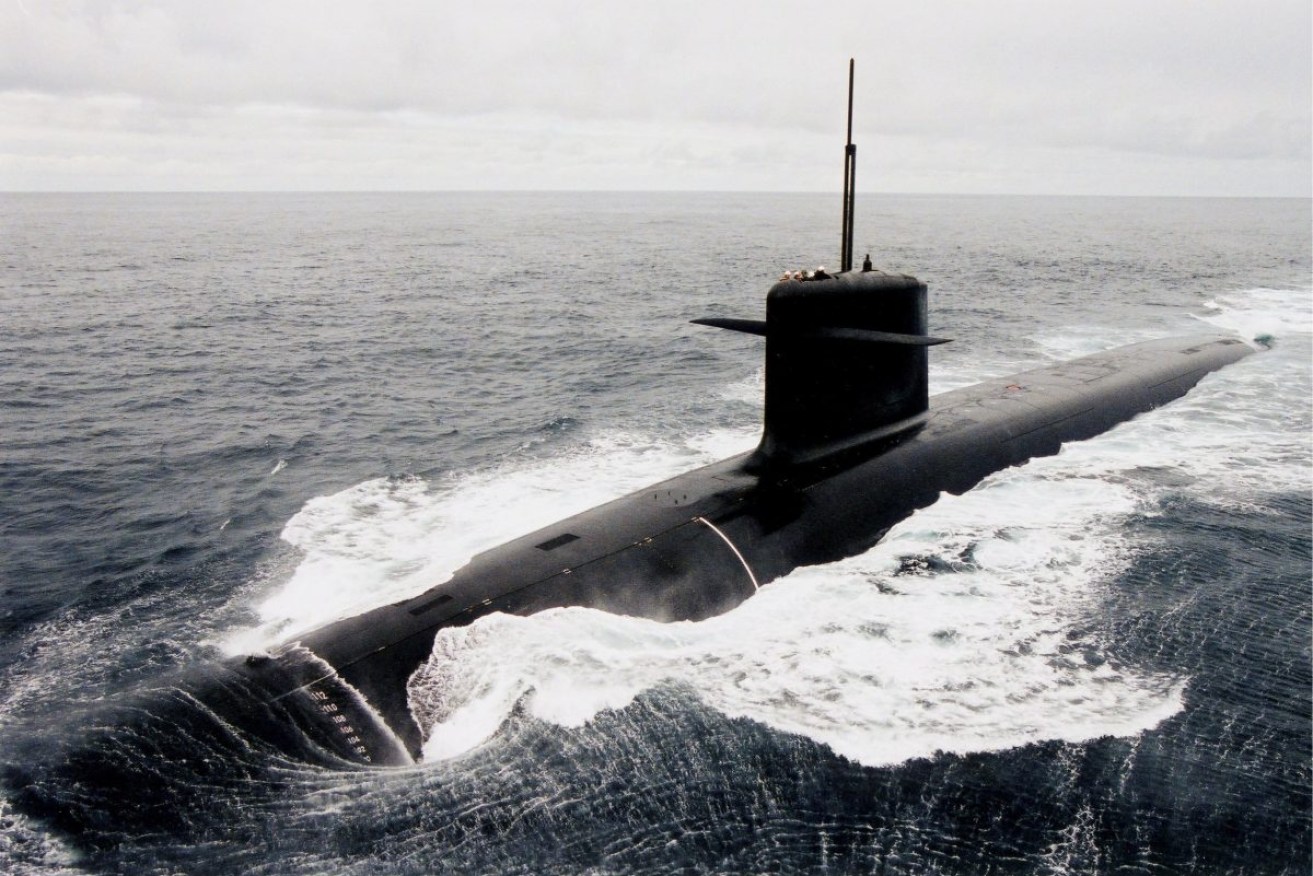France pitches nuke sub option for Australia
The French bidder for Australia’s future submarines project is using the potential for conversion to a nuclear-powered vessel as a selling point.

Photo: EPA/Marine Nationale
Australia’s new submarines will need the range and endurance to patrol far out into the Pacific or Indian Oceans or up into the South China Sea.
For that, a nuclear boat would be ideal.
Nuclear subs – nukes – can travel fast and stay submerged almost indefinitely, without the need to come to periscope depth every few days to run a diesel engine to charge batteries.
Submariners refer to this periodic need to come to the surface as the “indiscretion rate”. It’s when a submarine is most vulnerable to detection.
Successive Australian governments have ruled out the nuclear option for the 12 next-generation subs which will replace the Navy’s six Collins boats.
But a future government could head down the nuclear path, perhaps around mid-century, and Australia would be part of the way there should it choose French shipbuilder DCNS’ Shortfin Barracuda as our new sub.
That’s because this design is a derivative of the company’s new Barracuda nuclear attack submarine, fitted with diesel-electric propulsion instead of a nuclear reactor.
As part of its sales pitch, DCNS is touting a nuclear growth path.
“If, in 2050, Australia wants a nuclear submarine, they can design a nuclear submarine,” DCNS chief executive Herve Guillou told AAP this week in Cherbourg.
The DCNS bid offers Australia the eventual capability to come up with our own submarine whether nuclear or conventionally powered.
Deputy chief executive Marie-Pierre De Bailliencourt says the Shortfin Barracuda was conceived from a vessel designed to nuclear standards, especially safety.
That’s all way down the track.
In the meantime DCNS has to convince the Australian competitive evaluation process panel its proposal is better than those of Germany or Japan.
German firm TKMS is proposing its 4000-tonne Type 216, a new design based on its widely exported Type 214.
The Japanese government is offering its 4200-tonne Soryu-class boat, manufactured by Mitsubishi Heavy Industries and Kawasaki Shipbuilding Corporation.
Of the three designs, only the Soryu actually exists and is in service with Japanese navy. However, it would still need substantial modifications to meet Australian requirements for range and endurance.
Whichever design is chosen, it will certainly be built wholly or mostly in Australia at the ASC yard in Adelaide, with the first entering service in the early 2030s.
This will be Australia’s biggest-ever defence procurement by a large distance, costing as much as $50 billion for acquisition and perhaps $150 billion through their life.
DCNS has emerged as a strong contender.
De Bailliencourt believes the Australian government and defence force only accepted their’s was a serious bid after former defence minister Kevin Andrews and defence chiefs visited the DCNS yard at Cherbourg where the first of the new Barracuda-class is under construction for the French navy. It will be launched next year.
DCNS is the only shipbuilder in the world constructing both nuclear and diesel-electric subs. Its Scorpene conventional design has been exported to India, Malaysia, Chile and Brazil.
The 4500-tonne Australian version will be 2.5 metres shorter and 200 tonnes lighter than the nuclear Barracuda.
“De-nuking” the design is no trivial technical challenge.
The reactor, a unit about the size of a Smart car, and its shielding, steam turbine and back-up diesels will make way for six large diesels.
There will be a large bank of conventional lead-acid batteries. A major design change will involve creation of a large tank around the rear hull for diesel fuel.
Shortfin Barracuda will retain Barracuda’s innovative and secret pump-jet propulsion. Gone will be the traditional periscope, replaced by mast-mounted TV and infrared cameras. Some technology will be familiar – the all-important Thales sonars are similar to what’s used on the six Collins subs.
DCNS isn’t offering air-independent propulsion (takes up too much space) but may eventually offer lithium-ion batteries, a promising technology but one not yet proven as sufficiently safe for use in submarines.
The company is scathing of Japan’s proposal to power its Soryu boats with lithium-ion batteries from the outset.
“We know that the technology is the same one used in cars and in cars they explode,” De Bailliencourt said.
It’s also scathing of Japan’s proposal for technology transfer – the country has never exported any defence equipment, let alone something as complex as a submarine. Guillou likens this to learning rock-climbing by starting with Mount Everest.
Many security analysts have pointed to the strategic benefits of Australia buying Japanese subs, especially as the US focuses more on the Asia-Pacific.
But DCNS says Australia will remain a close strategic partner of Japan whether we buy the Soryu or not, simply because of geography.
Buying French brings its own strategic benefits. France has military forces in the Pacific and Indian Oceans and is an active partner in the fight against Islamic State in the Middle East, which neither Japan nor Germany can claim.
“Japan is a given. Why don’t you given yourself Europe on top of it,” De Bailliencourt said.
Disclosure: Max Blenkin travelled to France as a guest of DCNS.
AAP




